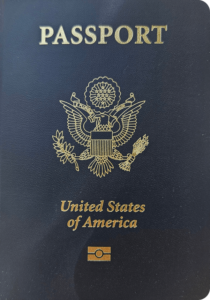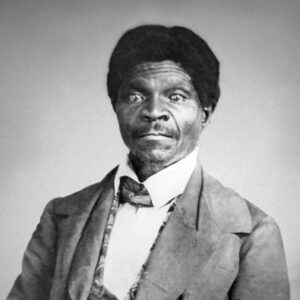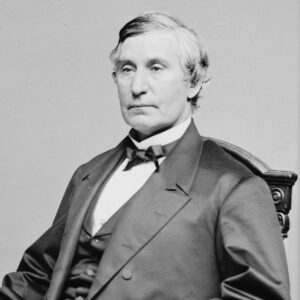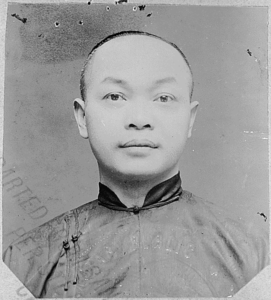Among other rights that have become fundamental to Americans, the 14th Amendment to the United States Constitution guarantees citizenship to “All persons born or naturalized in the United States, and subject to the jurisdiction thereof.” This is referred to as “birthright citizenship.”
Why was birthright citizenship included the 14th Amendment, and how has it impacted what it means to be “American”? Here are seven things you might not know.

1. Birthright citizenship in the United States pre-dates the 14th Amendment.
The idea of birthright citizenship was brought by colonists and their descendants from England where it was understood to be part of common law. It was incorporated to varying degrees in common law at the state level, which governed definitions of citizenship prior to 1868 when the United States established the first federal law governing citizenship by ratifying the 14th Amendment.
In the 1830 U.S. Supreme Court case centered around property rights and inheritance of a child with British parents, Inglis v. Trustees of the Sailor’s Snug Harbor, the court found:
“Nothing is better settled at the common law than the doctrine that the children even of aliens born in a country, while the parents are resident there under the protection of the government, and owing a temporary allegiance thereto, are subjects by birth.”

In 1830 the U.S. Supreme Court found that, although his parents were British, Robert Richard Randall was a U.S. citizen from birth. Photo courtesy of Grufnik on Flickr.
In a similar 1844 New York state court case, Lynch v. Clarke, Judge Lewis Standford wrote:
“I can entertain no doubt, but that by the law of the United States, every person born within the dominions and allegiance of the United States, whatever were the situation of his parents, is a natural born citizen.”
Unfortunately, the courts did not see the issue as clear cut when it came to African Americans. In the famous case Dred Scott v Sandford, the Supreme Court held in 1857 that:
“A negro, whose ancestors were imported into [the U.S.], and sold as slaves,” could not be an American citizen.

In 1847 the U.S. Supreme Court found that Dred Scott could not be a U.S. citizen because his parents were enslaved Africans.
2. The purpose of the 14th Amendment was to reunite the country following the Civil War.
Months after the Civil War concluded in 1865, the Joint Committee on Reconstruction, made up of nine members of the House of Representatives and six senators, was formed to “inquire into the condition of the States which formed the so-called Confederate States of America, and report whether they, or any of them, are entitled to be represented in either House of Congress.”
As a result of their inquiry, the committee drafted the 14th Amendment to guarantee the same federal rights to all citizens of all states, including the formerly enslaved. The amendment intended to provide all citizens with “equal protection under the laws” and extend the protections of the Bill of Rights to cover abuses by state governments.
Teachers wanting to share more about changes to citizenship during Reconstruction should reference our lesson plan bundle on Immigration and Reconstruction.
3. The 14th Amendment initially did not mention citizenship.
In 1866, after the House of Representatives approved the draft amendment, but before the Senate voted, Republican Senator Jacob Howard from Michigan proposed the language pertaining to citizenship to counteract the effects of the Dred Scott case and guarantee birthright citizenship for all Americans, regardless of race. During extended debate in the Senate, Howard explained the new language saying it was:
“simply declaratory of what I regard as the law of the land already, that every person born within the limits of the United States, and subject to their jurisdiction, is by virtue of natural law and national law a citizen of the United States.”
Both chambers eventually approved the amendment including the citizenship language, and it was ratified by the states in 1868.

Senator Jacob M. Howard, Republican from Michigan, wrote the citizenship clause for the 14th Amendment.
4. Birthright citizenship for all children of immigrants was first upheld by the Supreme Court in 1898.
Wong Kim Ark was born in San Franciso’s Chinatown to Chinese parents. As an adult, after his parents moved back to China, he would travel back and forth between China and the United States. After one such trip in 1895, he was denied entry to the United States by a customs officer who argued he was not a citizen because his parents were Chinese.
His case was not resolved until 1898 when the landmark Supreme Court case, United States v. Wong Kim Ark, was decided in Ark’s favor. In delivering the opinion, Justice Horace Gray relied on the first clause of the 14th Amendment “All persons born or naturalized in the United States, and subject to the jurisdiction thereof, are citizens of the United States and of the State wherein they reside” and the history of English common law, saying:
“Every child born in England of alien parents was a natural-born subject unless the child of an ambassador or other diplomatic agent of a foreign State or of an alien enemy in hostile occupation of the place where the child was born.”
“The same rule was in force in all the English Colonies upon this continent down to the time of the Declaration of Independence, and in the United States afterwards, and continued to prevail under the Constitution as originally established.”
Every challenge to this interpretation of birthright citizenship since then has failed.

In the first challenge to the 14th Amendment’s citizenship guarantee, Wong Kim Ark was found to be a U.S. citizen, although his parents were Chinese.
Teachers wanting to share more about this time period and the Chinese Exclusion Act with their students should reference our lesson plan bundle on Chinese Immigration in the 19th Century.
5. Native-Born did not include Native Americans
Although the 14th Amendment guaranteed citizenship to “All persons born or naturalized in the United States,” it was restricted to those who are “subject to the jurisdiction thereof.”
This was interpreted to mean that Native Americans were excluded, as illustrated by the 1884 Supreme Court case Elk v. Wilkins. In that decision, the court ruled that Native American tribes, although located within the territorial limits of the United States, were considered outside the “jurisdiction” of the United States because tribes were treated as “alien nations, distinct political communities.”
This was not rectified until the Congress passed the Indian Citizenship Act of 1924, which granted citizenship to all Native Americans born within the territorial limits of the United States.
6. There are still some exceptions
Over time, between court rulings and new legislation, birthright citizenship was extended to people born in U.S. territories including Puerto Rico, the Marianas, the Panama Canal Zone and the U.S. Virgin Island, but not American Samoa.
Regardless of where someone is born in the United States’ jurisdiction, there remain some exceptions that have been present since the passage of the 14th Amendment, primarily children of ambassadors or other foreign diplomatic agents.
7. Most of the Western Hemisphere followed the U.S. example.
According to World Population Review, 33 countries in the world have unrestricted birthright citizenship, and another 32 nations have some form of restricted birthright citizenship.
It also says, “nearly every nation that offers [unrestricted] birthright citizenship is located in North or South America. This is considered by many scholars to have begun in colonial times, in which European countries eager to populate their settlements in the ‘New World’ established more lenient and immigration-friendly citizenship policies.”
Examples of restricted birthright citizenship:
- In the United Kingdom, if one parent is a citizen or legally settled in the country, or if the child has lived in the country for 10 years or more, the child has the right of citizenship.
- In Cambodia, if the parents are living legally in Cambodia, the child has the right of citizenship.
- In Sudan, if the father was born in Sudan, the child has the right of citizenship.
- In Colombia, if one parent is a citizen or legal resident, the child has the right of citizenship.
Learn More
Here are some additional resources that could be helpful if you’d like to explore these concepts more:
Video Interviews with Children of Immigrant Entrepreneurs
